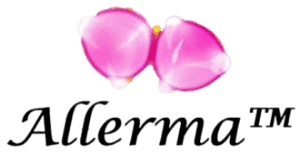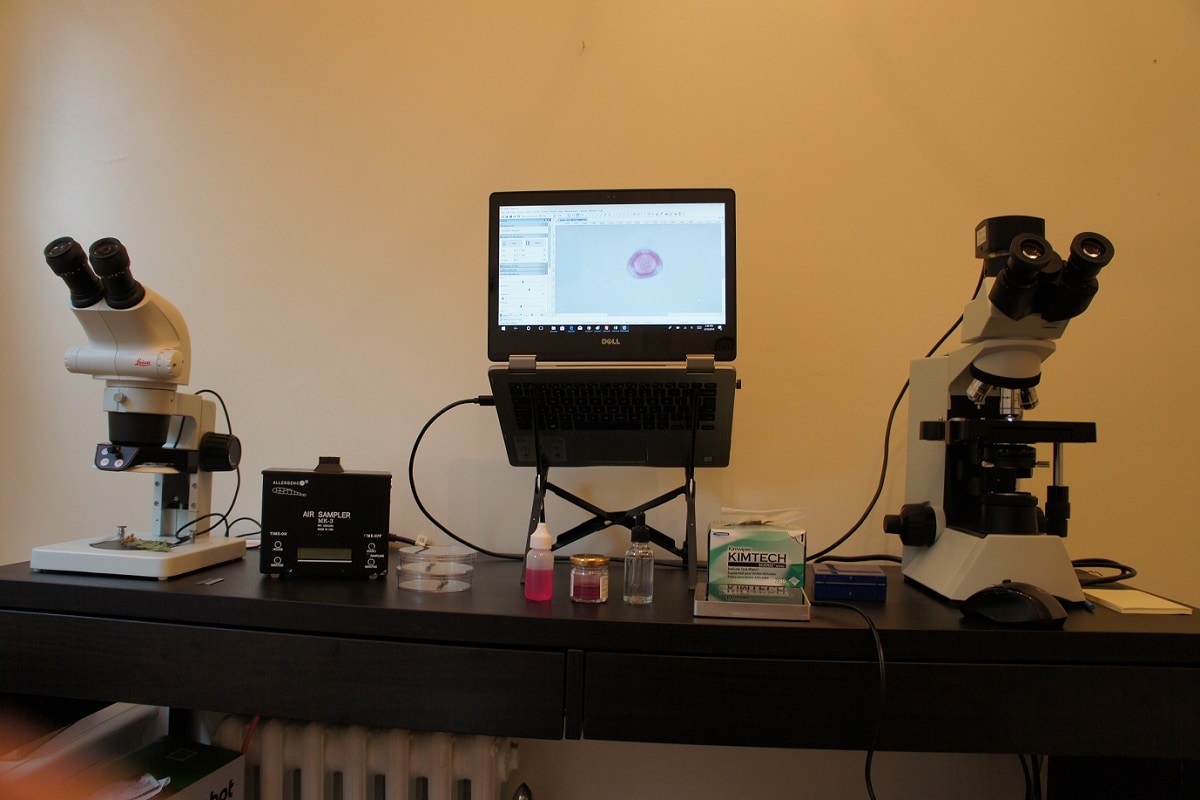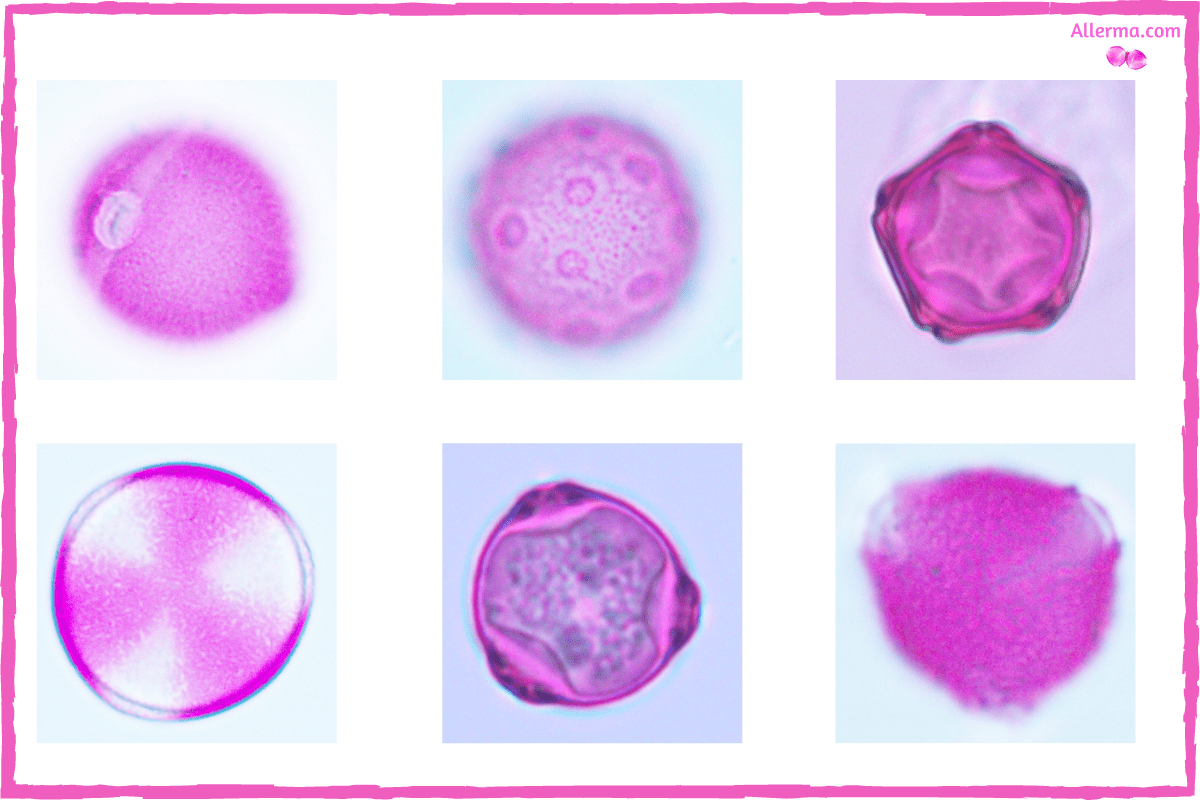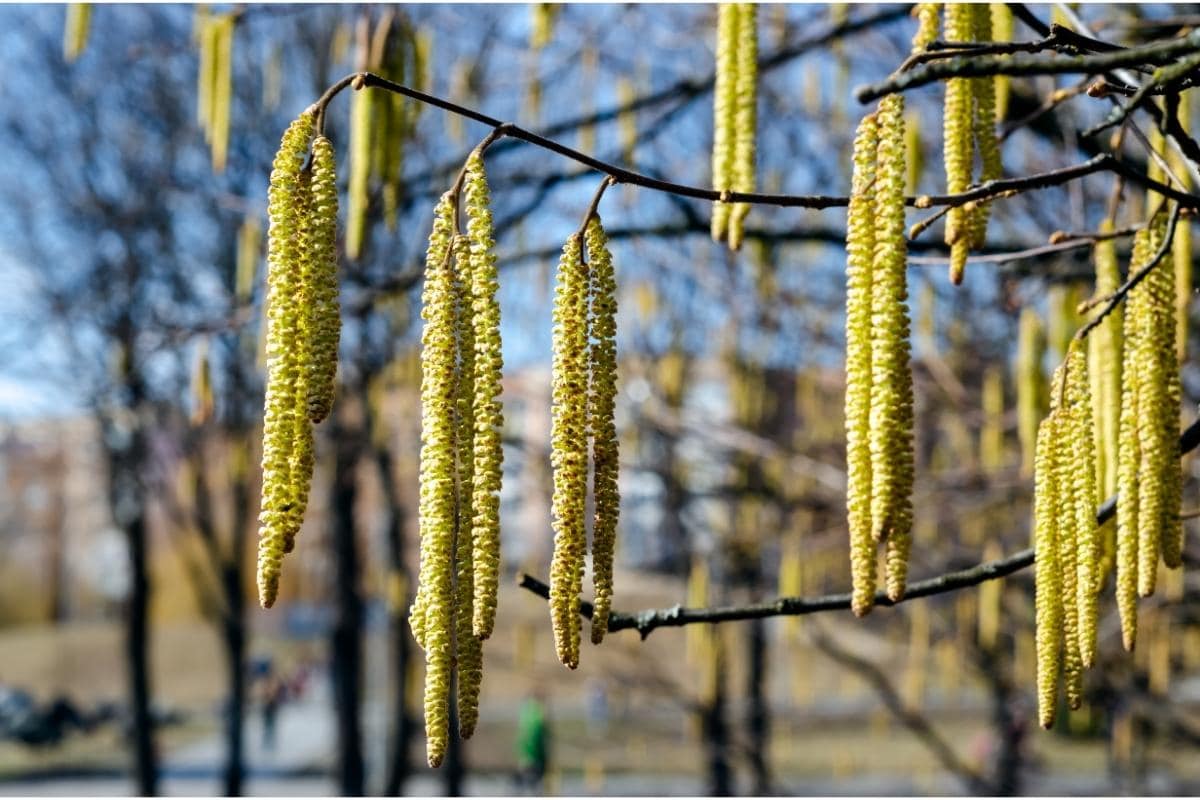Pollen counts as a % of the season’s peak load of the plant.
Follow me on BlueSky – @allerma.bsky.social
San Jose Pollen Count Commentary
I do regular air sampling and plant inspection to bring you the most accurate pollen count of San Jose. The city, due to its temperate climate, gets high levels of pollen counts throughout the year.
During winter, cypress, redwood, alder, and ash trees contribute to the pollen counts in San Jose.
Birch, sycamore, sweetgum, oak, olive, and pine add to San Jose pollen count during spring.
Chinese elm is the major pollinator during the fall in San Jose. In addition, privet also blooms during summer. However, it is an insect-pollinated plant, and its pollen count in the air remains low.
Spruce, Deodar cedars, and Casuarina bloom during winter. Fortunately for the San Jose residents, the pollen of these trees are not considered important allergens.
I generally see grass pollen in our air surveys from March-15th through July-31st. However, I do see some low counts of sporadic grass pollen in January, February, and August.
Among weeds, I routinely see low pollen counts of nettle, sagebrush, pigweed, dock, and English plantain. Fortunately, ragweed is not an important contributor to pollen counts in San Jose!
Our air sampling location:
Los Palmos Way, San Jose, CA 95119
If allergies have adversely impacted your lives, you would definitely benefit from the following three guides.
-
Pollen pictures of allergy plants.
The pollen pictures below were taken in my lab using an Olympus compound microscope. To bring clarity to the features of the pollen, different level of digital zoom is used.
-
Pollen allergy: A beginner’s guide with photos.
In his influential book – “The art of war”, general Sun Tzu wrote, ” If you know the enemy and know yourself, you need not fear the results of hundred
-
Grass allergy – A beginner’s guide w/ photos
What is grass allergy? Many allergy sufferers misunderstand grass allergies to be a reaction to the soft green swath that adorns their front lawn, or, the one they see in
Our Methodology
We use a combination of air sampling and plant inspections to identify which plants are releasing pollen.
We refrain from using the traditional high, medium, and low classifications because they are rather meaningless for an allergy sufferer. The concentration scales of high-medium-low are designed for academics and not for allergy sufferers. Besides, what is a low count for one person can be very high for someone with strong allergies.
If you are still curious, you can read more about our methodology here.




